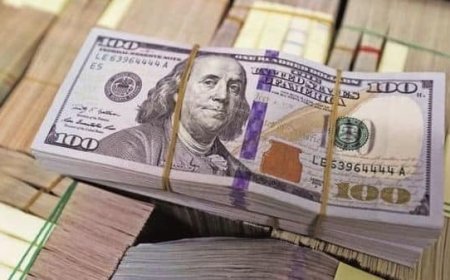US Dollar Faces Decline After Federal Reserve Meeting: Mixed Signals on Interest Rates and Global Market Trends
US Dollar dips post-Fed meeting. Mixed signals on interest rates and global market trends. Get insights now!

US dollar faced a decline on Thursday, stepping back from its nearly three-week peak reached a day earlier. The Federal Reserve's minutes from the December meeting were released on Wednesday, but they offered little insight into when the United States might consider cutting interest rates.
The minutes revealed that Fed officials are confident in controlling inflation but are wary of the potential negative impacts of their "overly restrictive" monetary policy on the economy. Despite these concerns, there was no clear guidance on when rate cuts might begin, with policymakers emphasizing the need for restrictive rates to persist for some time.
The dollar slipped by 0.11% to 102.29 against a basket of currencies after hitting a three-week high of 102.73 on the previous day.
Christopher Wong, a currency strategist at OCBC, commented, "The messaging that rates will stay elevated raises a second look at the aggressive cut expectations markets are pricing."
Additional data showed a further contraction in US manufacturing in December, albeit at a slower pace. Concurrently, US job openings declined for the third consecutive month in November, signaling a softening labor market.
Despite signs of a cooling US economy, opinions on the pace and scale of potential Fed rate cuts vary among traders. Market pricing, as indicated by the CME FedWatch tool, currently suggests a roughly 72% chance of rate cuts starting in March, down from 87% a week ago.
All eyes are now on the eagerly awaited US nonfarm payrolls report scheduled for Friday, expected to provide additional clarity on the Fed's room for rate adjustments.
Shifting focus to the Eurozone, the euro saw a 0.25% increase to $1.0950, bouncing back from a more than two-week low. This followed the release of inflation figures from France and other European countries. Expectations are set for a rebound in Eurozone headline inflation in the upcoming December print.
In other currency movements, the Australian dollar, often seen as an indicator of risk appetite, rose 0.2% to $0.6744, bouncing back from its two-week low. Similarly, the New Zealand dollar, also sensitive to risk sentiment, increased by 0.26% to $0.6263.
The Japanese yen experienced a decline against the greenback, with the dollar reaching over a two-week high at 143.90 yen.
Shifting to geopolitical developments, statements from Hezbollah in Lebanon and the Israeli army indicated a mutual desire to prevent the further escalation of conflict beyond the Gaza Strip after a drone strike in Beirut killed a Palestinian Hamas deputy leader.
Also Read: Dollar Gains Ground on First Day of the Year Due to Strong U.S. Yields





























































